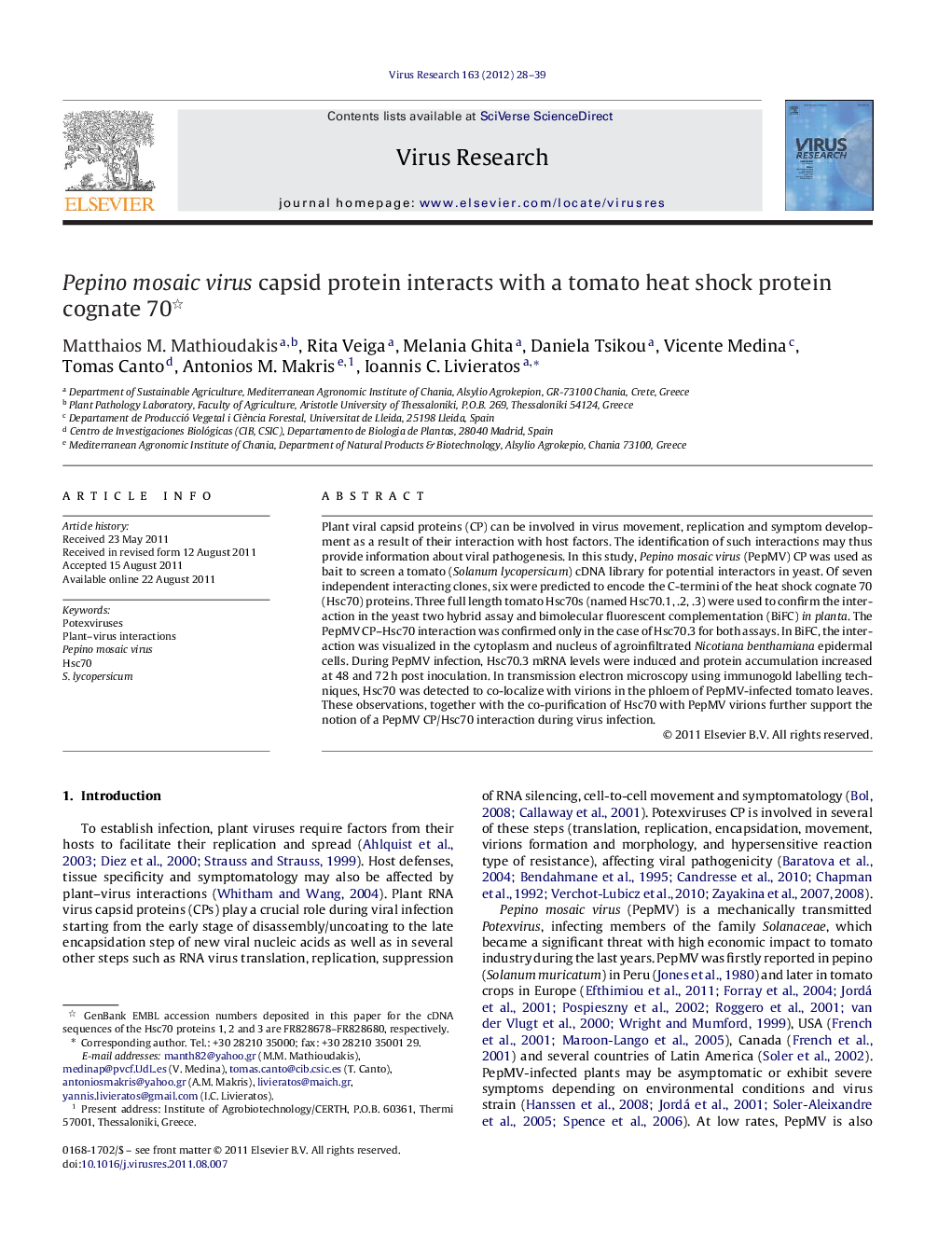| Article ID | Journal | Published Year | Pages | File Type |
|---|---|---|---|---|
| 6143218 | Virus Research | 2012 | 12 Pages |
Plant viral capsid proteins (CP) can be involved in virus movement, replication and symptom development as a result of their interaction with host factors. The identification of such interactions may thus provide information about viral pathogenesis. In this study, Pepino mosaic virus (PepMV) CP was used as bait to screen a tomato (Solanum lycopersicum) cDNA library for potential interactors in yeast. Of seven independent interacting clones, six were predicted to encode the C-termini of the heat shock cognate 70 (Hsc70) proteins. Three full length tomato Hsc70s (named Hsc70.1, .2, .3) were used to confirm the interaction in the yeast two hybrid assay and bimolecular fluorescent complementation (BiFC) in planta. The PepMV CP-Hsc70 interaction was confirmed only in the case of Hsc70.3 for both assays. In BiFC, the interaction was visualized in the cytoplasm and nucleus of agroinfiltrated Nicotiana benthamiana epidermal cells. During PepMV infection, Hsc70.3 mRNA levels were induced and protein accumulation increased at 48 and 72Â h post inoculation. In transmission electron microscopy using immunogold labelling techniques, Hsc70 was detected to co-localize with virions in the phloem of PepMV-infected tomato leaves. These observations, together with the co-purification of Hsc70 with PepMV virions further support the notion of a PepMV CP/Hsc70 interaction during virus infection.
⺠PepMV CP interacts with Hsc70 in the yeast two hybrid and BiFC assays. ⺠During PepMV infection, Hsc70 mRNA and protein levels are induced. ⺠Hsc70 co-localize with PepMV virions in the phloem of PepMV-infected tomato leaves. ⺠Tomato Hsc70 is detected in purified PepMV virions.
